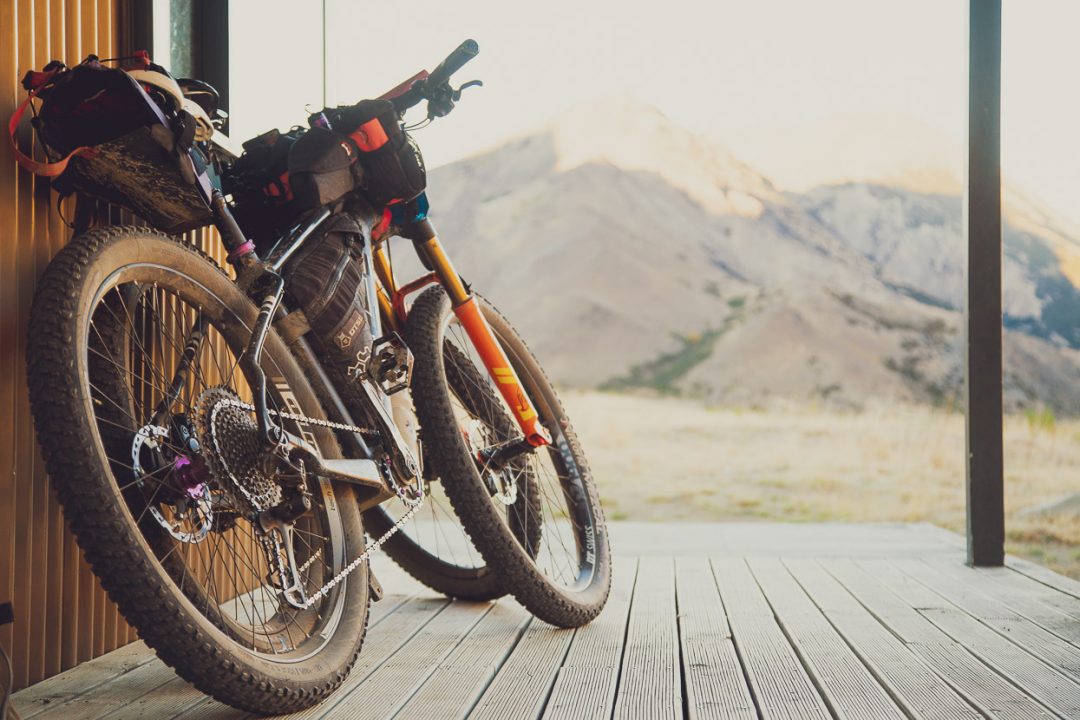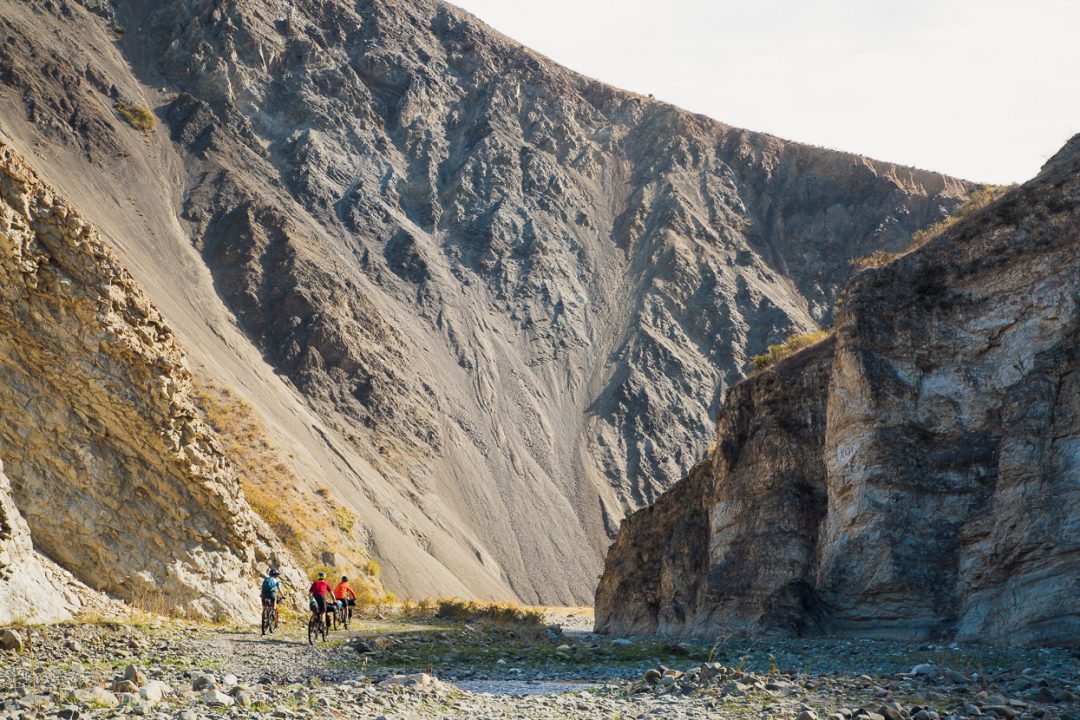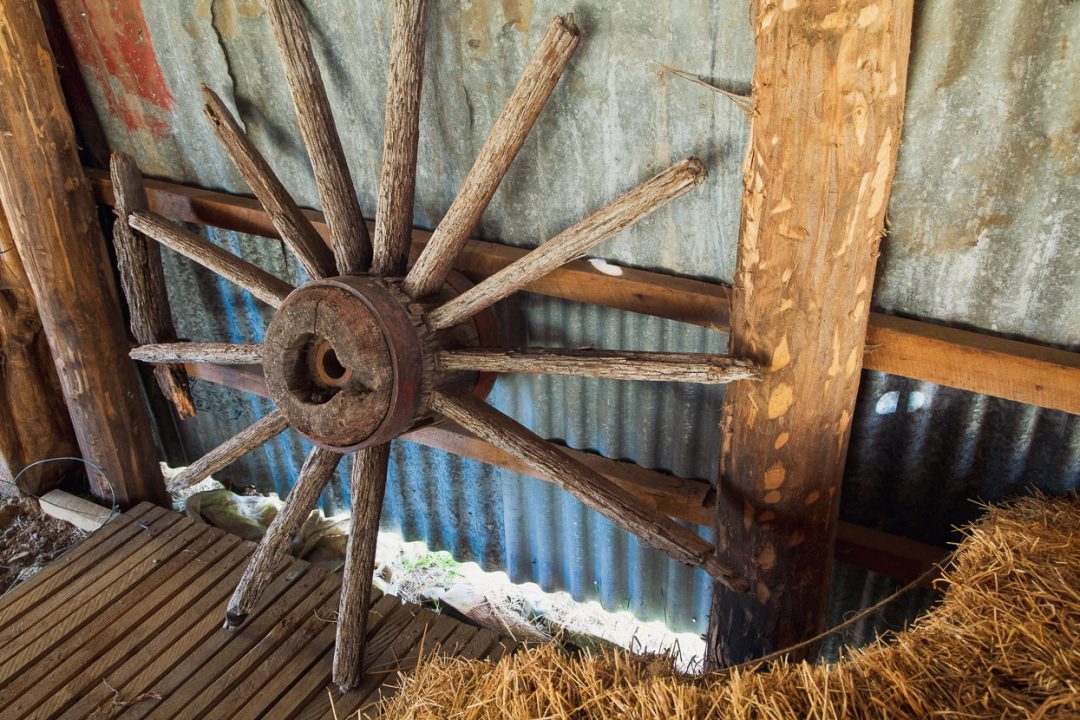Now that the spring equinox is about to roll around, it seems like a good time to start posting bikepacking routes again. Back in the clear days and cold mornings of autumn we got out into the Marlborough and Canterbury high country three weekends in a row on overnight bikepacking trips.
We were making hay while the sun shone, before the short days and unsettled weather of winter kicked in and made distant overnighters less appealing. This post is the first of a series of three covering some excellent one- to two-night trips, with the first being Blind Saddle and Clarence River, in the Ka Whata Tu o Rakihouia Conservation Park. The plan for this trip was ride over Blind Saddle and down to Palmer Hut for a night, before partly backtracking and then heading to Forbes Hut for a second night, then back out again via Blind Saddle.
In between the parallel mountain ranges of the Inland and Seaward Kaikoura Ranges, the Clarence River is the easternmost of three major river systems that drain the mountains of the north east South Island. The Seaward Kaikouras are the ‘wall’ of mountains that form the oft-photographed and picturesque backdrop of the township of Kaikoura.
There’s only one road into the Ka Whata Tu o Rakihouia Conservation Park, which encompasses the mid-Clarence Valley and a large swathe of the Seaward Kaikouras. The road crosses over Bushy Saddle and Blind Saddle before following the Seymour/Herring Stream down valley towards the Clarence.
The route in starts from the locked Kahutara gate. Cyclists and trampers are welcome to enter without permission. All others are required to call Muzzle Station on (03) 319 5791.
From the gate, double track led up to a short plateau and then we were into the steeper climbing up to Bushy Saddle.
Although Blind Saddle is the highest named point on the road, the climbing continues for another 100m, and by the time you reach the beginning of the descent, you’ve climbed well over 1000m. They’re pretty hard earned metres too; with the road particularly steep beyond Bushy Saddle. The reward (on a clear day of course) is the stunning views of the Kaikoura coast that get better and better as you gain height.
At the pass beyond Blind Saddle you can see into the interior of the range. The dry, rocky peaks and precipitous road reminded us quite a lot of the countless similar roads we’d traversed in Peru and Bolivia in 2018 and 2019.
We coasted on down into the steep valley, from the subalpine plants, back to the golden poplars. But where Peru might have had some pre Colombian ruins or a remote pueblito, instead, in the classic New Zealand tradition there were huts, some historic and some new.
These valleys once formed part of a huge high country farming block, Bluff Station, which has since split into Muzzle Station and a large tract of conservation land. This region’s grazing history dates back to 1857, when the first sheep runs were established, but while the sheep and cattle are now mostly gone, the story of the land is told with its place names and historic musterer’s huts.
The red corrugated iron of Tent Poles Hut was the first we encountered, then Warden, where there’s both an historic hut and a modern DoC-built one. Further on, as the valley steepens and narrows we detoured briefly to look at Black Spur Slab Hut. This one sits, secluded, beneath some firey-orange poplars. Brittle leaves spiraled lazily to the ground while we parked our bikes, checked out the old hut and enjoyed the beautiful calm autumn day.
From Black Spur we continued down valley for a few more kilometres, passing increasingly spectacular geology, until we reached the turnoff to Palmer Hut. From the stream crossing a 4WD track climbs steeply, before sidling and rolling over some smaller climbs before it descends to Old Willows Hut.
Old Willows is not quite a smart as the other old huts, but its interior tells some stories with the names of mustering parties dating back many decades etched into its boards.
After Willows, the 4WD track climbed steeply over another small saddle before dropping to the Clarence proper and up to Palmer Hut on the river bank. This hut is another quite new DoC hut, and is popular with hunters, kayakers, rafters and trampers. It’s a really nice spot, surrounded in golden grassland and steep ranges. We ended our day there, happy to have the hut to ourselves and the long evenings of autumn to hang out, read and relax.
After a casual start in the morning we backtracked the previous afternoon’s route to Seymour/Herring Stream.
Once back on the main route we turned downstream and followed the route along the stony double track towards the Clarence once again, while the canyon walls closed slowly in.
Those Andes memories came back again in this raw and rocky environment.
Our second day was a shorter one, just taking us to Forbes Hut, where we lunched in the sun on the deck and watched some some exhausted and cold adventure race participants coming in to a transition there after a frigid trip down the river.
Our only plan for the afternoon was to ride on a couple of kilometres to check out the old buildings remaining from the Quail Flat Homestead (now a historic site).
A homestead site for generations, Quail Flat is well worth stopping by to check out. It’s still used as a temporary base by DoC staff today, and there are several interpretation panels telling the history of the region and the story of the early settlers.
While the others returned to Forbes Hut after our look around, I rode on down valley for another hour or so to take in a bit more of the landscape.
And once again we had a hut to ourselves for another relaxing evening.
On day three we returned the way we had come, biking back up Seymour/Herring Stream, and past the historic huts as we worked our back up the long climb to the pass. From there all that remained was a massive descent to the car and a late lunch in Kaikoura to look forward to.
This was just a relatively small sample of a region that holds quite a lot of potential for bikepacking adventures. Dirt road and 4WD continues to from Forbes Hut to Goose Flat, further down the Clarence. There used to be a DoC hut there until it burnt down a few years ago.
It’s possible to cross the Clarence and continue along 4WD tracks and dirt road all the way out to Kekerengu, with permission from the right landowners, which would be an excellent multi-day trip. If you’re prepared for some off-track travel and hike-a-bike, an option also exists to come into the Clarence (or out) from the Molesworth via Carters Saddle, Lake McCrae and Elliott Biv, a trip I’m very keen to do. There’s also a few more huts and bivs to explore in the Ka Whata Tu o Rakihouia Conservation Park in general.
There’s more information about the reserve in general in this Department of Conservation PDF.
Say thanks with a donation!
If you enjoy our content and find it informative or inspirational, you’re welcome to show us some love with a donation. The services we use to create our GPS tracks and host the site cost money, funds that we’d rather be spending on the road, creating bikepacking and tramping routes and content to share with you. Thanks for reading!

















































Thanks for another great blog Mark. Looks like a great wee ride. Wife and I will do this one for sure over the summer. Wonder if you would do a gear blog? My wife and I have been using traditional panniers over the last few years but want to go more stream lined and also try reduce of weight. We like the idea of bike packing setup but worry about enough room for gear and food if out of contact for 3-4 days before hitting another town. Would love to hear how you guys pack, gear and food during long trips or long days between refuelling. Also, what camera gear and how you pack it on trip around NZ. Cheers and thanks Mark. Bryan
Thanks Bryan, and thanks for the suggestion. Our Andes packing list (which actually is much the same for NZ, though changes a little depending on season) is here: https://www.highlux.co.nz/2020/04/andes-bikepacking-gear-list-updated-april-2020/ At the end of that pack list is an example of how we pack the bikes.
At some point I will update this to a fully NZ-specific pack list.
Camera kit is covered here: https://www.highlux.co.nz/2018/06/photography-on-the-road-equipment-workflow-for-bikepacking/ with the main difference being that in NZ, because we have been doing shorter trips less focussed around photography, I have been carrying a single 24-105mm or 50mm lens, instead of the three I carried overseas. The camera and carrying mode is still the same.
Great trip. We did a variation on this and came in over the saddle at the head of Robson stream and down to Cloudy hut, then down to Willows hut (they removed the newer one?). Palmer hut looks like a great addition to the Clarence valley. Would love to go back on fat bikes or at least + size rigs.
How was the trail surface? Would it be okay on skinny tired gravel bikes or are mountain bikes the go?
The trail surface is good for most of the route – a mix of fine gravel and hardpack on double track or narrow dirt roads. There is a bit of river bed and lumpier river stones occasionally. Skinny tyres would be ok, but gravel bike gears might give your legs a hard time. Some of the climbing is pretty steep. Overall, a MTB is best.